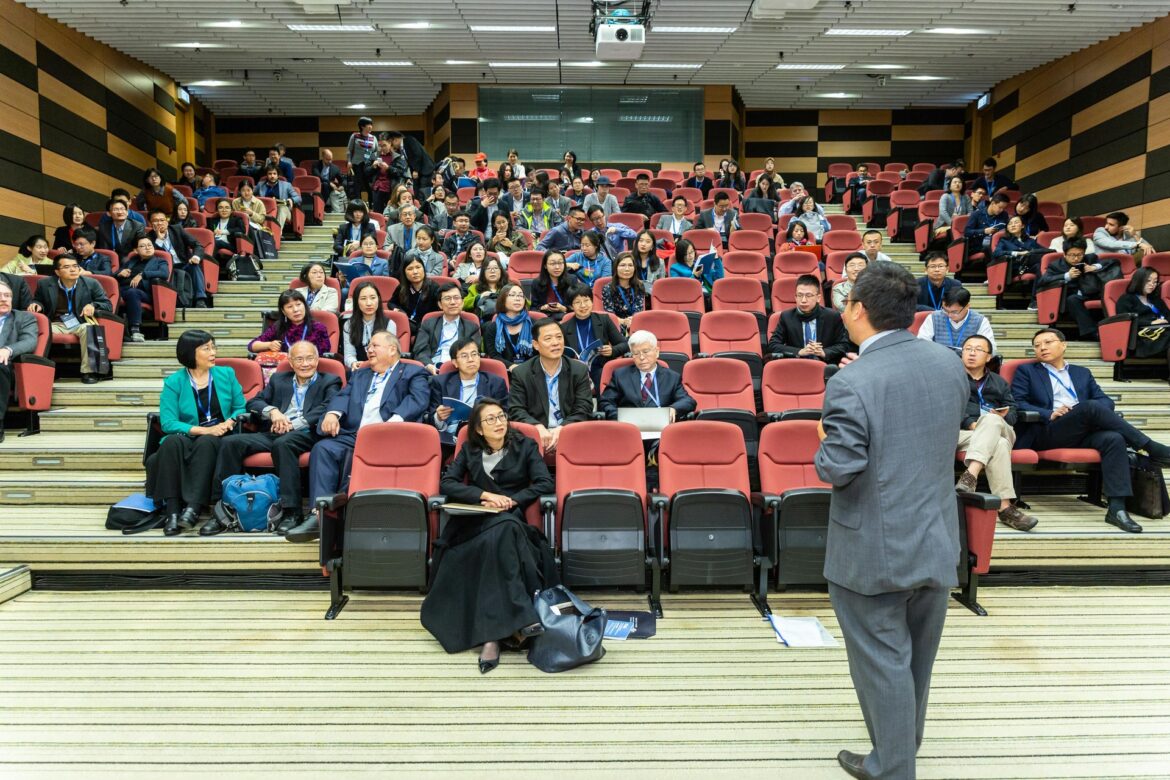Presenting and submitting conference papers at seminars and academic conferences is a crucial part of academic life, especially for early-career researchers. These events offer attending scholars and researchers a great opportunity to meet and exchange ideas and perspectives on their work. Therefore, when organizers issue a call for submission of conference papers, researchers must try to participate by submitting their papers. When published, these conference proceedings go on to serve as essential academic and research resources for students and early-career researchers.
Table of Contents
- Why are conference papers important?
- Difference between conference papers and journal papers
- Tips on writing a conference paper
- Writing a high-quality conference paper
Why are conference papers important?
Conferences offer an excellent opportunity for researchers to share their work with wider audiences through conference papers, receive feedback, and network with other researchers. They also serve as a stepping stone to publishing in peer-reviewed journals, as they allow researchers to refine their ideas and receive insights from peers and mentors before submitting a manuscript for publication. Additionally, presenting research at conferences can not only help establish one’s credibility and reputation as a thought leader in a particular field. Still, it can also lead to new collaborations, exciting research opportunities, and even job offers or promotions.
Difference between conference papers and journal papers
Compared to journal papers, conference papers are usually short and aim to present initial findings and analysis of ongoing research. Journal papers, on the other hand, tend to be longer and more detailed and are screened through a peer-review process. Depending on the type of presentation that you are going to give at the conference or depending on your specific role, conference papers can be customized as respondent (speaker and respondent roll out presentations), panel (a few speakers speak for a designated period with a discussant), poster (visual presentation), roundtable (few speakers speak with time limits) and workshops (scope for a detailed presentation).
Tips on writing a conference paper
Writing an impactful conference paper requires a careful blend of good research and clarity in writing. To be accepted on submission, researchers must ensure that they follow the specific guidelines laid out by organizers. A typical conference paper usually begins with a title page, followed by the abstract, an examination of the research problem, the methodology followed and the principal conclusions. It must include the following elements:
Title page
This page should provide the title of the conference paper, your name and credentials, the institution you are working with, and the date of submission. It must also succinctly convey the crux of your research study.
Abstract
An essential component of the conference paper, this section must provide a brief synopsis that includes the aims and objectives of your study, methodology, research findings and principal conclusions. Ensure that the length of the abstract is in accordance with the guidelines provided by the conference committee.
Research methodology
This section is important for conference organizers to assess your paper, and therefore, it must be presented clearly, concisely, and accurately.
Findings/ results
The main findings should be clearly stated, drawing on evidence-based conclusions. Tables and figures are recommended as they help convey complex data more effectively.
References
Ensure that you accurately list references to the work you have cited. Most conference organizers have specific formats for citations and references, so do check before submitting your conference paper.
Writing a high-quality conference paper
- Focus on the audience profile: When writing a conference paper, it is essential to keep the audience in mind. This will help you write your paper in a more engaging and impactful way. Experts suggest keeping in mind both the broader research questions that are sought to be addressed in the conference and the fundamental issues in the primary or related field of study – this will go a long way in helping you link your research to these aspects and consequently, enable you to connect more effectively with audiences.
- Keep your writing structured and organized. It is essential to organize conference papers logically and convincingly. Focus on the key aspects of your study, and provide solid examples and illustrations to strengthen your argument and make it more attractive to those present.
- Reading aloud: Experts suggest reading your conference paper aloud several times. This technique helps you identify possible errors in language and grammar and brings clarity to your ideas and presentation.
- Conference guidelines: It is important to ensure that you follow the guidelines, structure, format, and length requested by conference organizers. This helps ensure that your conference paper is accepted upon submission without too many changes and alterations.
Paperpal is a comprehensive AI writing toolkit that helps students and researchers achieve 2x the writing in half the time. It leverages 21+ years of STM experience and insights from millions of research articles to provide in-depth academic writing, language editing, and submission readiness support to help you write better, faster.
Get accurate academic translations, rewriting support, grammar checks, vocabulary suggestions, and generative AI assistance that delivers human precision at machine speed. Try for free or upgrade to Paperpal Prime starting at US$19 a month to access premium features, including consistency, plagiarism, and 30+ submission readiness checks to help you succeed.
Experience the future of academic writing – Sign up to Paperpal and start writing for free!



